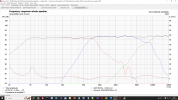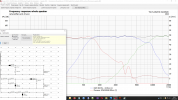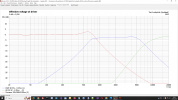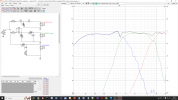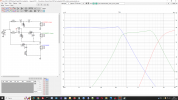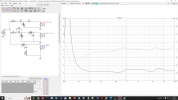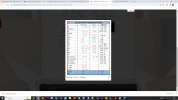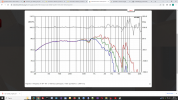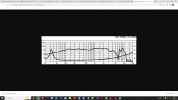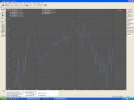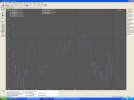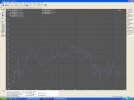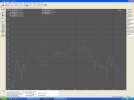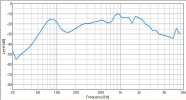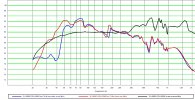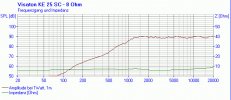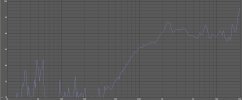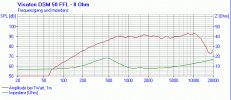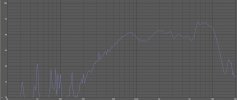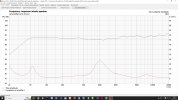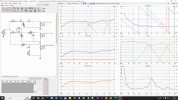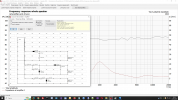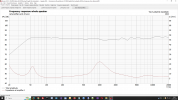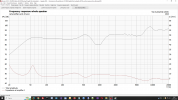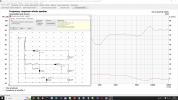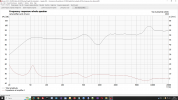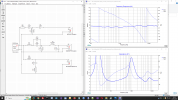Hi,
15 year ago I have design a 3 way DIY speakers (76 liters) with these drivers:
Tweeter: Visaton KE25SC
Midrange: Visaton DSM50FFL
Woofer: Monacor SPH250KE
Unfortunately, at that time I was very inexperienced and had not used crossover design software, so by doing some simulations I realised that the frequency response is not flat.
For this reason I like to update my crossover without re-design from zero, just replace some inductors and capacitors and resistors.
Becouse most of my drivers are Visaton I have used BoxSim and after a lot of work I have found a good compromise with a budget of only 150 Euro of components.
The result seem good becouse the frequency response is flat.
After this I have tried to see what happen with VituixCad and unfortunately there are differences and the frequency response is not flat like BoxSim.
In particular there is an evident bump at 600/700 Hz.
At the moment I am stuck because I don't know who is right: BoxSim or VituixCad or simply there are other options that I don't have set.
Attached there are some screeshots that show what happen.
Do you think that I can trust of BoxSim ? or VituixCad is more accurate ?
Thank you at advance !!
15 year ago I have design a 3 way DIY speakers (76 liters) with these drivers:
Tweeter: Visaton KE25SC
Midrange: Visaton DSM50FFL
Woofer: Monacor SPH250KE
Unfortunately, at that time I was very inexperienced and had not used crossover design software, so by doing some simulations I realised that the frequency response is not flat.
For this reason I like to update my crossover without re-design from zero, just replace some inductors and capacitors and resistors.
Becouse most of my drivers are Visaton I have used BoxSim and after a lot of work I have found a good compromise with a budget of only 150 Euro of components.
The result seem good becouse the frequency response is flat.
After this I have tried to see what happen with VituixCad and unfortunately there are differences and the frequency response is not flat like BoxSim.
In particular there is an evident bump at 600/700 Hz.
At the moment I am stuck because I don't know who is right: BoxSim or VituixCad or simply there are other options that I don't have set.
Attached there are some screeshots that show what happen.
Do you think that I can trust of BoxSim ? or VituixCad is more accurate ?
Thank you at advance !!

